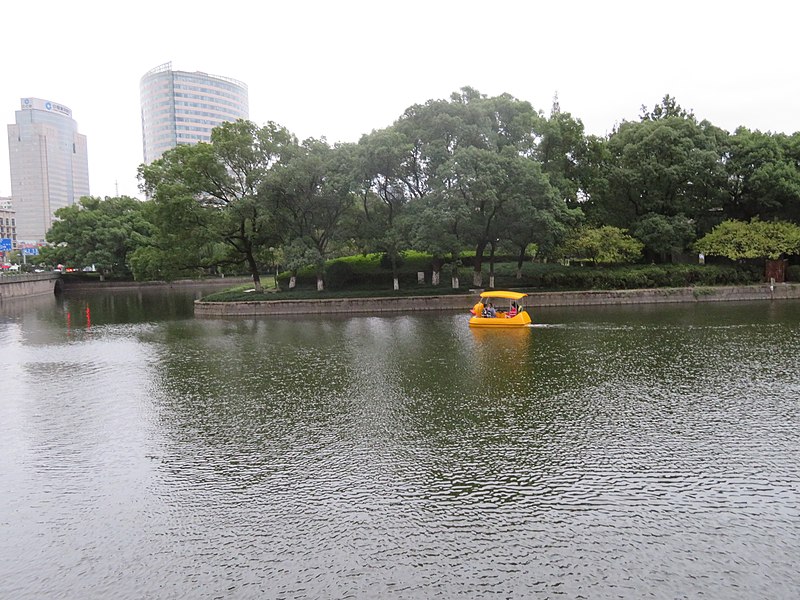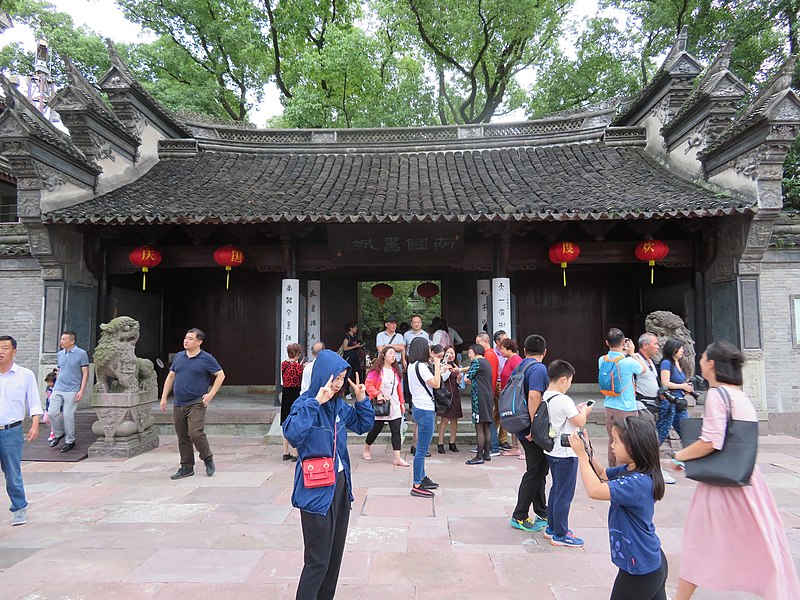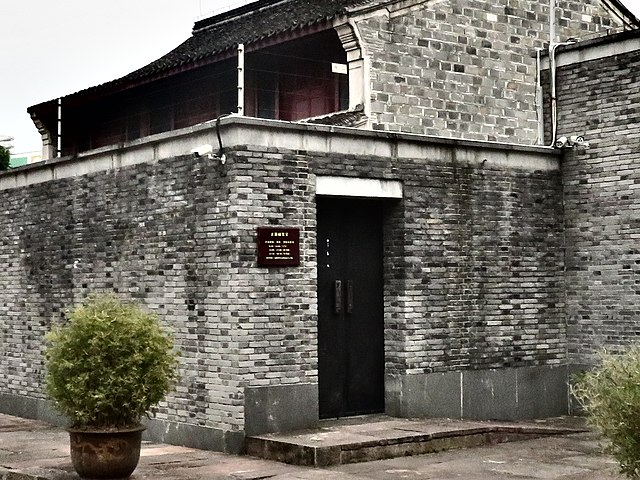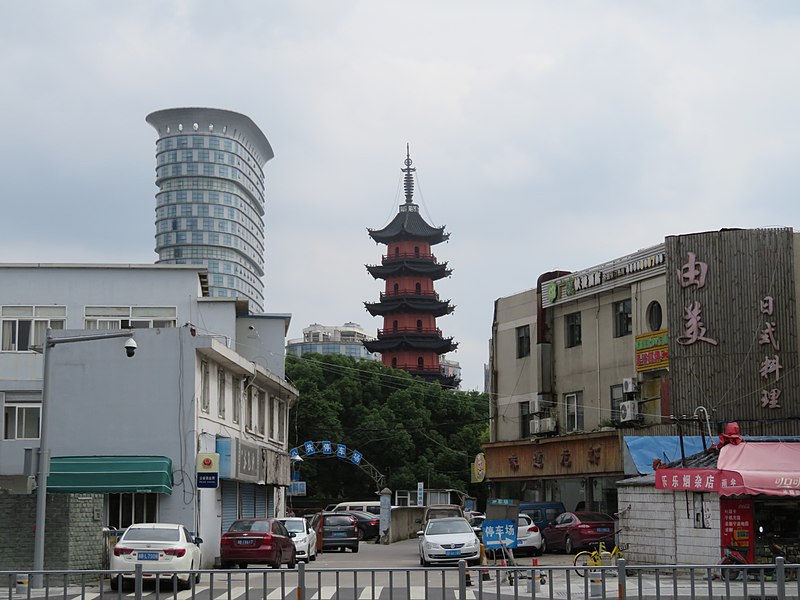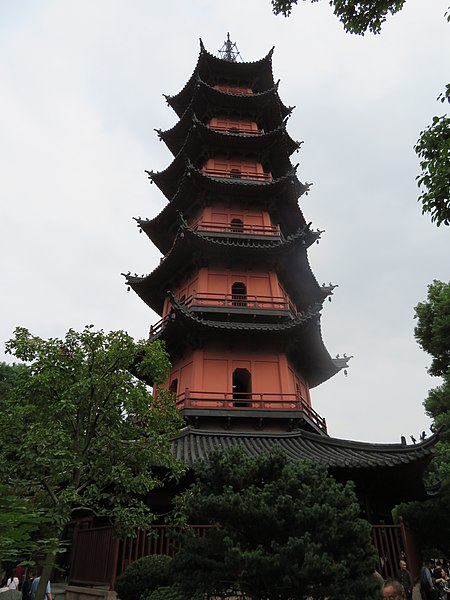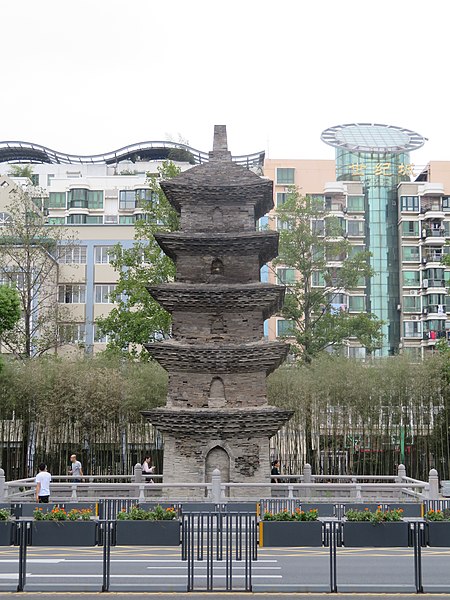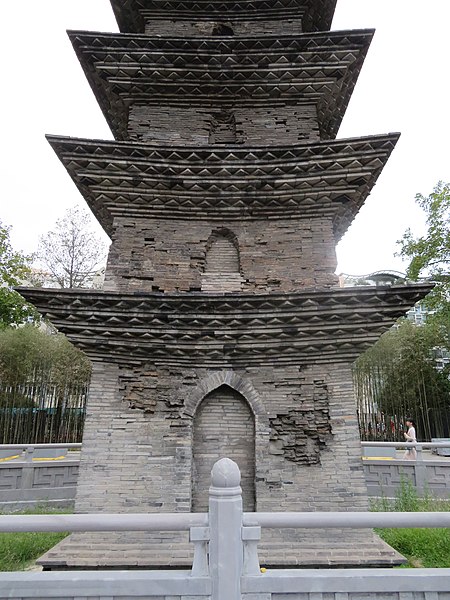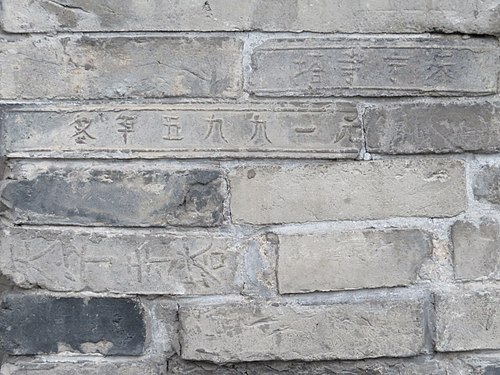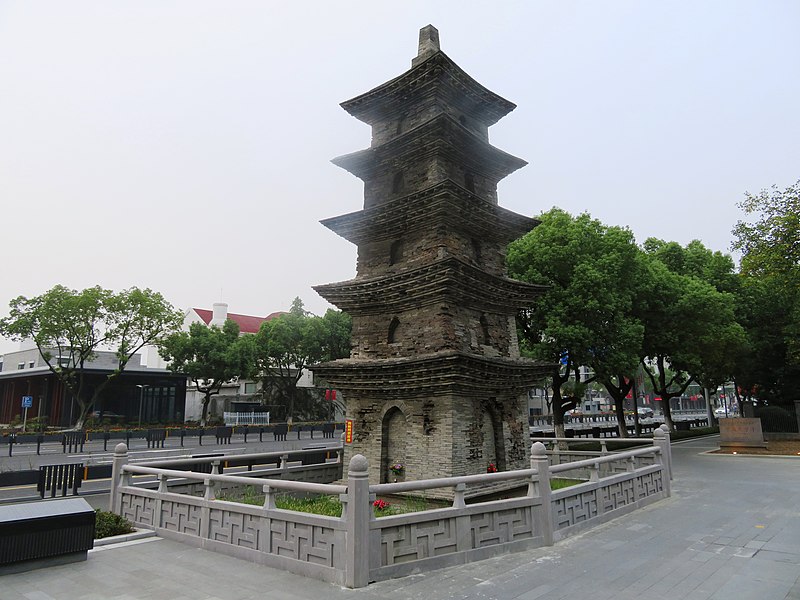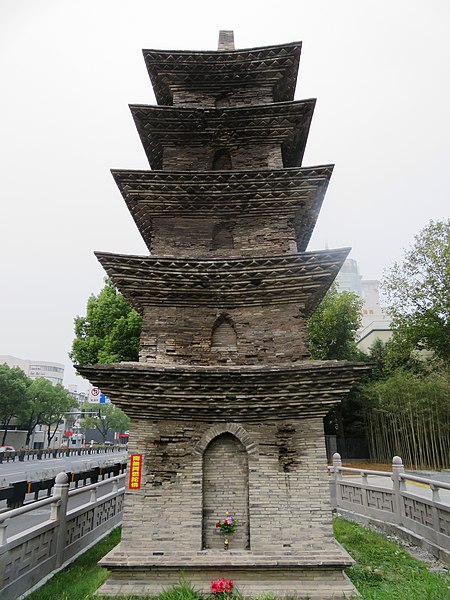Diary of a Rambling Antiquarian
Thursday, 5 October 2017
Two Ningbo Pagodas
Hohhot to Ningbo
A journey of a thousand miles (or 1,870 km to be precise) starts with a decision to change my travel plans the week before I fly out to China. I have three weeks in China, of which the middle week I am attending a meeting in Hohhot in Inner Mongolia; the first week I am in Beijing for a couple of days and then travelling to Hohhot for pre-meeting meetings for two days; which just leaves the third week for travelling in Inner Mongolia to visit sites of interest. Then, a few weeks before I am due to leave for Beijing, I find out that the Tianyi Pavilion Library (Tiānyī Gé 天一閣) holds a Ming dynasty set of Sino-Barbarian glossaries, including an unpublished two-thirds complete copy of the Sino-Jurchen glossary with Jurchen script. There is a complete manuscript copy of the Sino-Jurchen glossary at the Berlin State Library (digitized here), but the Tianyi copy is reported to be a woodblock printed edition, which would be unique. And as it is the only other copy of the Sino-Jurchen glossary in the world to cover the main sections of the glossary (the copies in Beijing and Tokyo only cover the supplementary section of the glossary), it is extremely important for verifying the Jurchen glosses that are only attested in the Berlin copy. This book was originally in the collection of Lú Zhǐ 盧址 (1725–1794), in his Baojing Lou 抱經樓 library in Yinxian 鄞縣, Zhejiang. This library was dispersed in 1916, and the books were subsequently acquired by Zhū Dǐngxù 朱鼎煦 (1886–1967), a famous book collector from Ningbo. Zhu's huge book collection (Biéyòu Zhāi 别宥齋) was protected from damage during the Cultural Revolution, and in 1979 his family donated the collection to the Tianyi Ge library. Getting to examine this book is more important for me than sightseeing, so I make a decision to curtail my travels in Inner Mongolia, and make a long detour to Ningbo on the east coast of China, on my way from Hohhot to Beijing. It means that I will have to forego my planned trip to Kublai Khan's summer capital of Xanadu (Shàngdū 上都).
I leave Hohhot on Tuesday, three days ealier than I planned in my original itinerary, and catch the midday train to Hangzhou. The train arrives at Hangzhou 24 hours and 14 minutes later; and two hours after that I am on a train to Ningbo. I have no seat as I forgot to book a ticket in advance, but it is only a three hour journey, and I arrive at Ningbo station in the late afternoon of Wednesday. On the way to my hotel I walk past Moon Lake (yuèhú 月湖, often called Yuehu Lake in English). Ningbo seems like a fun kind of place, but I am not here for fun.
Boating on Moon Lake
On Thursday morning I wake up early. I only have today to visit the library and examine the Sino-Jurchen glossary, so every minute counts. I easily find my way to Tianyi Pavilion, which is only about 20 minutes by foot from the hotel, and go to the west entrance, which is already seething with tourists.
West entrance to Tianyi Pavilion
But I do not want to go in. I look around, and to the north-west side of the entrance is a grey, nondescript building of no interest to any of the passing tourists. This is the Ancient Books Reading Room of the Tianyi Pavilion Library (天一閣古籍閱覽室).
Ancient Books Reading Room
Playing around with my camera settings to make the building look less drab.
Entrance to the Ancient Books Reading Room
Still experimenting with my camera.
The board next to the door indicates that the reading room should be open, but directs visitors to the visitor centre to arrange the entrance formalities. I try the door, but it does not open, so I wander over to the visitor centre next to the main entrance to Tianyi Pavilion.
Opening hours

Here I am informed by the friendly staff that the reading room is closed for the whole week on account of the National Day Holiday, which is on the 1st October each year. Today is the 5th October, but like many places in China the reading room is taking the whole week off. It will be open again on Monday I am informed; but on Monday I will be back at work 9,370 km away. I should have known. I had been in email contact with a librarian at the Tianyi Pavilion Library, and had told him vaguely that I was coming to look at the book in October, but I did not confirm an exact date. I should have, but I didn't.* I go back to the hotel in a daze, and send the librarian an email explaining my predicament, asking if I could get hold of digital images of the book I want to see (I know that the book has been digitized by the library). He replies that he will look into it, but despite several follow-up emails I never hear from him again.
* I really should have been better prepared, because this is not the first time that I have travelled a thousand miles specially to examine a rare book in a library that is closed over a holiday period. In August 1991 I travelled from London to Madrid to visit the Royal Library of the Escorial Monastery in order to examine a unique 1548 edition of the Romance of the Three Kingdoms (for my PhD dissertation on the textual history of the novel), only to discover that the library was closed for the whole of August. I went again the following year in a different month, and I was able to see the book, which was pivotal in understanding the textual evolution of the novel. The library was even kind enough to provide me with a microfilm of the book.
In the afternoon I go for a long walk in Ningbo. I was expecting to be at the library all day, with no spare time for excursions, so I have not done my homework, and do not have a list of places of interest to see. So I just wander aimlessly about until I see a pagoda peeking through the skyscrapers, and head in that direction.
Tianfeng Pagoda
Tianfeng Pagoda (天封塔) was originally constructed in the Tang dynasty during the reign of Empress Wu Zetian, between the Tiance Wansui (天冊萬歲) and Wansui Dengfeng (萬歲登封) eras (695–696), and is named from the first character of the Tiance Wansui era (Tian 天) and the last character of the Wansui Dengfeng era (Feng 封). It is a hexagonal brick and wooden pagoda consisting of seven storeys, and is about 51 metres in height. The pagoda burnt down and was rebuilt several times over the centuries. The latest restoration was in 1989. In 1984 archaeologists found a large number of artefacts in the pagoda's underground chamber (地宫), some engraved with the date "14th year of the Shaoxing era" (紹興十四年), indicating that they were placed there during the rebuilding of the pagoda in 1144 following the destruction of the pagoda during an invasion by Jin dynasty (Jurchen) forces in 1129. I should visit the Ningbo Museum to see if any of the objects from the pagoda are on display, but I don't feel like visiting a museum today.
Tianfeng Pagoda in the centre of Ningbo
Tianfeng Pagoda from the west
To be honest, it is not my kind of pagoda, and with all the crowds of tourists I do not even bother climbing up the interior stairs, as you can for a small price. I don't spend long here, and leave in search of more interesting sites, if there are any.
Tianning Pagoda
I head back to Tianyi Pavilion, but end up a little lost, and find myself on a road north of Tianyi Pavilion. On the other side of the main road I spot a very interesting-looking square grey-brick five-storey pagoda, but as it is not easy to cross the road here, so I continue on my way to Tianyi Pavilion, and make a mental note to come back here a bit later.
Grey brick pagoda on the other side of the road
Half an hour later I am back, on the right side of the road, and I discover that this in the Pagoda of Tianning Temple (天寧寺塔), which was built during the Tang dynasty, in the year 863, on the grounds of the Tianning Temple. The temple is long gone, and all that remains is this five-storey square brick pagoda, incongruously planted in the pavement on the north side of Zhongshan West Road. The pagoda was restored in 1995, and the light grey bricks belong to this restoration. Unlike many other restored pagodas in China, where the restoration is essentially a reconstruction, the restoration of Tianning Pagoda has been kept to a minimum, and all areas of original brickwork that can be saved have been preserved. Even after renovation this is a far more authentic pagoda than Tianfeng Pagoda, and I really like it. Unfortunately it is getting late in the afternoon and the light is not good on this grey and cloudy day, so none of my photos of the whole pagoda come out well. But I do manage to take some photos of the restored parts of the first storey which show how some of the restored bricks are inscribed with the date of restoration or name of the pagoda, which I think is a very nice touch.
Lower part of Tianning Pagoda
Restored brickwork with inscriptions
"天寧寺塔" (Pagoda of Tianning Temple")
"公元一九九五年冬" ("Winter 1995")
My train to Beijing leaves at 7:45 tomorrow morning. I decide to leave the hotel at 6:00, and see if I can take any better pictures of the pagoda in the morning light. I arrive at 6:25, and spend five minutes photographing the pagoda from all angles, but it is a gloomy morning and the pictures are not an improvement on yesterday. I leave for Beijing wishing that I had stayed in Inner Mongolia, and visited Xanandu instead. Oh well, next time maybe.
Tianning Pagoda from the north-east
Tianning Pagoda from the east
Libraries | Pagodas | Tang dynasty | Zhejiang
Index of Rambling Antiquarian Blog Posts
Rambling Antiquarian on Google Maps
